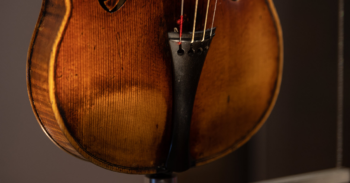By Chandra Wickramasinghe and Kamala Wickramasinghe (ed.)
World Scientific
Paperback: £28
E-book: £21

Fred Hoyle was undoubtedly among the most original thinkers of his time and one of the leading figures of 20th-century physics. From the purely scientific viewpoint, his name is associated with at least three ideas: the synthesis of heavy nuclear elements in the cores of supernovae (developed in collaboration with William Fowler, Margaret and Geoffrey Burbidge); the steady-state model of the universe (formulated together with Hermann Bondi and Thomas Gold); and some of the early applications of anthropic arguments to astrophysics and cosmology. Hoyle also contributed to many other fields – such as stellar structure, planetary formation, galactic dynamics and the origin of large-scale magnetism – where his creative imagination often made the difference.
A Journey with Fred Hoyle – now in a second edition that incorporates relevant developments that have occurred since the original was published in 2005 – is a respectful, lively and at times exciting tribute to an independent thinker, a capable teacher and an inventive scientist. It is an extremely well written collection of scientific memoirs and an intriguing journey in the realm of scientific controversies, which often accompany the achievements of those who like to think a little differently. The author started his PhD under the guidance of Hoyle in the early 1960s and was still collaborating with him in 2001 when Hoyle passed away. His narration begins in Cambridge where, from the mid-1950s to the mid-1960s, three disciplines thrived serendipitously: biology (with the monumental discovery of James Watson and Francis Crick of the famous double helix structure of genetic material); cosmology and astrophysics (with the work of Hoyle at the institute of astronomy and of Martin Ryle with the radio-astronomy group) and particle physics (with the Lucasian professorship of Paul Dirac).
The Cambridge atmosphere probably inspired a quest for the unification between astrophysics and biology – a field that later became known as astrobiology and gained funding and respect from the whole scientific community. The starting observation made by Hoyle and Wickramasinghe was that interstellar clouds are not made of ice, as originally thought in the 1950s and early 1960s, but rather of carbon. By analysing the way that interstellar dust dims starlight the authors proposed, in a crescendo, that the carbon was part of complex organic molecules and, eventually, bacteria or even viruses. This combination of science and inventiveness led to the theory of panspermia, i.e. the hypothesis that life exists throughout the universe distributed in meteorites and asteroids.
Is it really true that life on the Earth came from the cosmos? This is probably not the most relevant question. What matters here is to appreciate that the current success of astrobiology started – amid inevitable controversies – from the analysis of organic compounds in interstellar space. This is an interesting book and worth reading for those who like to follow the complicated fate of successful ideas. Recalling the title of Hoyle’s autobiography, we could say that “home” for scientists is, sometimes, “where the wind blows”.





